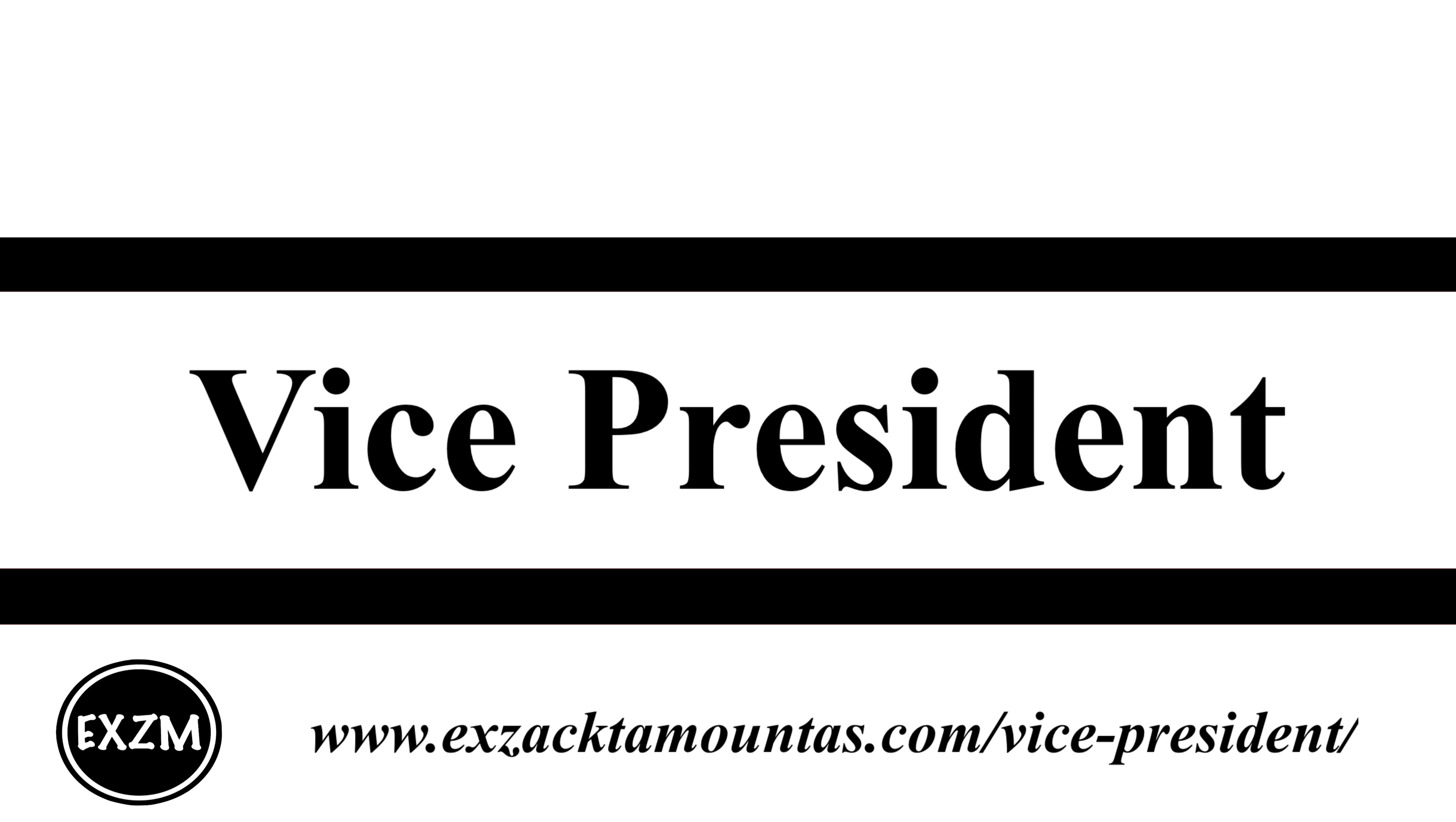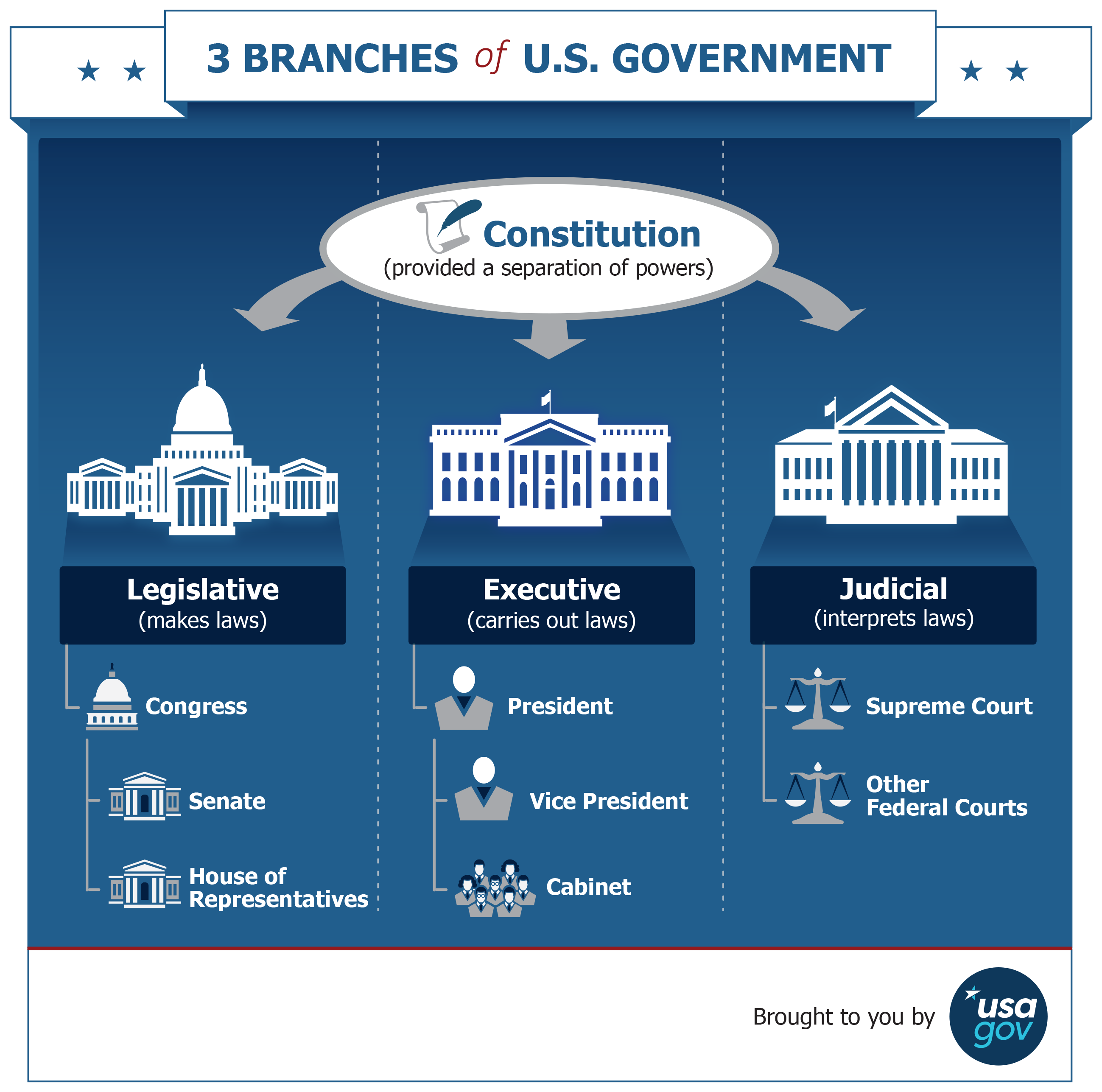
I need your support to keep this website going! PLEASE AND THANK YOU! 👍💚👌🔥😎😆😁❤️💕👏😊🧲🌞🌙😉🌍🌕🤣🇺🇸💯🙏🌎
ALSO, LISTEN TO AND DOWNLOAD MY MUSIC ALBUM CALLED, PATRIOTS DEFEAT GLOBALISTS!

https://exzacktamountas.com/latest-posts/
DOWNLOAD Alex Jones App At AJN LIVE! https://www.AlexJonesApp.com
The 8th Amendment Could Save INFOWARS!

Vice President
U.S. Constitution
The Founding Fathers, the framers of the U.S. Constitution, wanted to form a government that did not allow one person to have too much control. With this in mind, they wrote the Constitution to provide for a separation of powers, or three separate branches of government.
Each branch has its own responsibilities and at the same time, the three branches work together to make the country run smoothly and to assure that the rights of citizens are not ignored or disallowed. This is done through checks and balances. A branch may use its powers to check the powers of the other two in order to maintain a balance of power among the three branches of government.
Legislative – Makes Laws
Congress is composed of two parts: the Senate and the House of Representatives.
Senate
The Senate has 100 elected senators total; 2 senators per state. Each senator serves a 6-year term.
House of Representatives
The House has 435 voting representatives; the number of representatives from each state is based on the state’s population. Each representative serves a two-year term and may be re-elected.
Executive – Carries Out Laws
The executive branch is composed of the president, vice president, and Cabinet members.
President
The president is the head of state, head of the U.S. government, and the commander-in-chief of the U.S. military.
Vice President
The vice president not only supports the president but also acts as the presiding officer of the Senate.
Cabinet
The Cabinet members are nominated by the president and must be approved by the Senate (with at least 51 votes). They serve as the president’s advisors and heads of various departments and agencies.
Judicial – Evaluates Laws
The judicial branch of government is made up of the court system.
Supreme Court
The Supreme Court is the highest court in the country. The nine justices are nominated by the president and must be approved by the Senate (with at least 51 votes).
Other Federal Courts
There are lower Federal courts but they were not created by the Constitution. Congress established them around the country to handle federal business as the country grew, using power granted by the Constitution.
You can download or order a kids’ version of our 3 Branches poster.
—————–
There are 3 Branches of the United States Government
The Legislative Branch,
The Executive Branch, and
The Judicial Branch.
This is how the United States Government Works
The federal government is equally divided into three separate branches by the Constitution of the United States of America, to make sure that no individual or group, will have more power than the other:
-
- The Legislative Branch – Makes the laws (Congress consists of the Senate and the House of Representatives)
-
- The Executive Branch – Carries out the laws (President, Vice President, Cabinet, most federal agencies)
- The Judicial Branch – Evaluates the laws (Supreme Court and other federal courts)
Here’s how each branch of government can change acts of the other branches:
-
- 1) Congress confirms or rejects the president’s nominees.
2) Congress can remove the president from office in only exceptional circumstances. - 1) The president can veto legislation created by Congress.
2) The president nominates heads of federal agencies.
- 1) Congress confirms or rejects the president’s nominees.
- 1) The Justices of the Supreme Court can overturn unconstitutional laws.
2) The Justices of the Supreme Court are also nominated by the president and confirmed by the Senate.
Checks And Balances – The ability of each branch to respond to the actions of the other branches is called the system of Checks And Balances.
Legislative Branch
The legislative branch has 5 basic responsibilities:
1) To draft proposed laws,
2) To confirm or reject presidential nominations:
for heads of federal agencies,
3) Federal Judges,
4) And The Supreme Court.
5) The legislative branch also has the authority to declare war.
The legislative branch includes Congress (which consists of the Senate and the House of Representatives), plus special agencies and offices that provide their support and their services to Congress. The American citizens have their right to vote for their Senators and their Representatives through free, confidential ballots in fair elections in their districts.
-
- Senate – In the 50 states there are never more than two elected Senators per state, which means the total for Senators is always 100. A Senate term is six years and there is no limit to the number of terms an individual can serve. The Senate tends to respond more directly to issues of national, rather than local concern, though both houses of Congress participate in all aspects of legislation and policymaking.
- House of Representatives – Also referred to as a congressman or congresswoman, each representative is elected to a two-year term serving the people of a specific congressional district and there is no limit to the number of terms an individual can serve. The number of voting representatives in the House is fixed by law at no more than 435, proportionally representing the population of the 50 states. Currently, there are 5 additional non-voting delegates representing the District of Columbia, the Virgin Islands, Guam, American Samoa, and the Commonwealth of the Northern Mariana Islands. A resident commissioner represents Puerto Rico. Learn more about representatives at The House Explained.
Executive Branch
The executive branch carries out the laws and also enforces the laws. It includes
1) The President,
2) Vice President,
3) The Cabinet,
4) Executive Departments,
5) Independent Agencies,
5) And Other Boards,
6) Commissions,
7) And Committees.
The American citizens have their right to vote for the president and vice president through free, confidential ballots in fair elections in their districts.
Key roles of the executive branch include:
-
- President – The president of the United States of America leads the country. He or she is the
1) Head of State,
2) Leader of the Federal Government,
3) and Commander in Chief of the United States Armed Forces.
The president serves a
4) four-year term,
5) and can be elected no more than two times.
6) He or she has to at least be 35 years old,
7) A natural born citizen,
8) and resided in the United States for at least 14 years.
- President – The president of the United States of America leads the country. He or she is the
-
- Vice president – The vice president supports the president. If the president is ever unable to serve, then the vice president becomes president. The vice president can be elected and serve an unlimited number of four-year terms as vice president, even under a different president.
- The Cabinet – A council of high-ranking members in the government. Cabinet members serve as advisors to the president. They include
1) the vice president,
2) heads of executive departments,
3) and other high-ranking government officials.
Cabinet members are nominated by the president and must be approved by a simple majority of the Senate – 51 votes of all 100 Senators vote.
Executive Branch Agencies, Commissions, and Committees
Much of the work in the executive branch is done by
1) Federal Agencies,
2) Departments,
3) Committees,
4) And other groups.
-
- Executive Office of the President – The Executive Office of the president communicates the president’s message and deals with the federal budget, security, and other high priorities. To provide the President with the support needed to govern effectively, the Executive Office of the President (EOP), was created in 1939, by President Franklin D. Roosevelt. The EOP has responsibility for tasks ranging from communicating the President’s message to the American people to promoting the trade interests abroad. Overseen by the White House Chief of Staff, the EOP has traditionally been home to many of the President’s closest advisors.
-
- Executive Departments – These are the main agencies of the federal government. The heads of these 15 agencies are also members of the president’s cabinet. Fifteen executive departments — each led by an appointed member of the President’s Cabinet — carry out the day-to-day administration of the federal government.
- Executive Department Sub-Agencies – These are smaller sub-agencies that support the specialized work within their parent executive department agencies.
- Executive Departments – These are the main agencies of the federal government. The heads of these 15 agencies are also members of the president’s cabinet. Fifteen executive departments — each led by an appointed member of the President’s Cabinet — carry out the day-to-day administration of the federal government.
-
- Independent Agencies – These agencies are not represented in the cabinet and are not part of the Executive Office of the president. They deal with government operations, the economy, and regulatory oversight.
-
- Boards, Commissions, and Committees – Congress or the president establish these smaller organizations to manage specific tasks and areas that don’t fall under parent agencies.
- Quasi-Official Agencies – Although they’re not officially part of the executive branch, these agencies are required by federal statute to release certain information about their programs and activities in the Federal Register, the daily journal of government activities.
Judicial Branch
The judicial branch
1) interprets the meaning of laws,
2) applies laws to individual cases,
3) and decides if laws violate the Constitution.
It’s comprised of the Supreme Court and other federal courts. Members of the Judicial Branch are appointed by the President and confirmed by the Senate.
-
- Supreme Court—The Supreme Court is the highest court in the United States. The president nominates the Justices of the Supreme Court and the Justices must be approved by the Senate.
-
- Nine members make up the Supreme Court— a Chief Justice and eight Associate Justices. There must be a minimum or quorum of six Justices to decide a case.
-
- If there is an even number of Justices and a case results in a tie, the lower court’s decision stands.
- There is no fixed term for Justices. They serve until their death, retirement, or removal in exceptional circumstances.
-
- Supreme Court—The Supreme Court is the highest court in the United States. The president nominates the Justices of the Supreme Court and the Justices must be approved by the Senate.
- Federal Courts and Judicial Agencies – The Constitution gives Congress the authority to establish other federal courts to handle cases that involve federal laws including tax and bankruptcy, lawsuits involving U.S. and state governments or the Constitution, and more. Other federal judicial agencies and programs support the courts and research judicial policy.
Confirmation Process for Judges and Justices
Appointments for Supreme Court Justices and other federal judgeships follow the same basic process:
-
- The president nominates a person to fill a vacant judgeship.
-
- The Senate Judiciary Committee holds a hearing on the nominee and votes on whether to forward the nomination to the full Senate.
-
- If the nomination moves forward, the Senate can debate the nomination. Debate must end before the Senate can vote on whether to confirm the nominee. A Senator will request unanimous consent to end the debate, but any Senator can refuse.
-
- Without unanimous consent, the Senate must pass a cloture motion to end the debate. It takes a simple majority of votes—51 if all 100 Senators vote—to pass cloture and end debate about a federal judicial nominee.
- Once the debate ends, the Senate votes on confirmation. The nominee for Supreme Court or any other federal judgeship needs a simple majority of votes—51 if all 100 Senators vote—to be confirmed.
Infographic: How the Supreme Court Works
Learn how cases reach the Supreme Court and how the Justices make their decisions. Use this lesson plan in class.
How the Supreme Court Works
The Supreme Court is:
- The highest court in the country
- Located in Washington, DC
- The head of the judicial branch of the federal government
- Responsible for deciding whether laws violate the Constitution
- In session from early October until late June or early July
How a Case Gets to the Supreme Court
Most cases reach the Court on appeal. An appeal is a request for a higher court to reverse the decision of a lower court. Most appeals come from federal courts. They can come from state courts if a case deals with federal law.
Rarely, the Court hears a new case, such as one between states.
- Dissatisfied parties petition the Court for review
Parties may appeal their case to the Supreme Court, petitioning the Court to review the decision of the lower court. - Justices study documents
The Justices examine the petition and supporting materials. - Justices vote
Four Justices must vote in favor for a case to be granted review.
What Happens Once a Case is Selected for Review?
- Parties make arguments
The Justices review the briefs (written arguments) and hear oral arguments. In oral arguments, each side usually has 30 minutes to present its case. The Justices typically ask many questions during this time. - Justices write opinions
The Justices vote on the case and write their opinions.The majority opinion shared by more than half of the Justices becomes the Court’s decision.
Justices who disagree with the majority opinion write dissenting or minority opinions.
- The Court issues its decision
Justices may change their vote after reading first drafts of the opinions. Once the opinions are completed and all of the Justices have cast a final vote, the Court “hands down” its decision.All cases are heard and decided before summer recess. It can take up to nine months to announce a decision.
Every year:
The Court receives 7,000-8,000 requests for review and grants 70-80 for oral argument. Other requests are granted and decided without argument.
About the Justices:
There are nine Justices:
- A Chief Justice, who sits in the middle and is the head of the judicial branch.
- Eight Associate Justices
When a new Justice is needed:
- The President nominates a candidate, usually a federal judge.
- The Senate votes to confirm the nominee.
- The Court can continue deciding cases with less than nine Justices, but if there is a tie, the lower court’s decision stands.
Justices are appointed for life, though they may resign or retire.
- They serve an average of 16 years.
UPDATED November 2025!

I need your support to keep this website going! PLEASE AND THANK YOU! 👍💚👌🔥😎😆😁❤️💕👏😊🧲🌞🌙😉🌍🌕🤣🇺🇸💯🙏🌎
ALSO, LISTEN TO AND DOWNLOAD MY MUSIC ALBUM CALLED, PATRIOTS DEFEAT GLOBALISTS!
DOWNLOAD Alex Jones App At AJN LIVE! https://www.AlexJonesApp.com
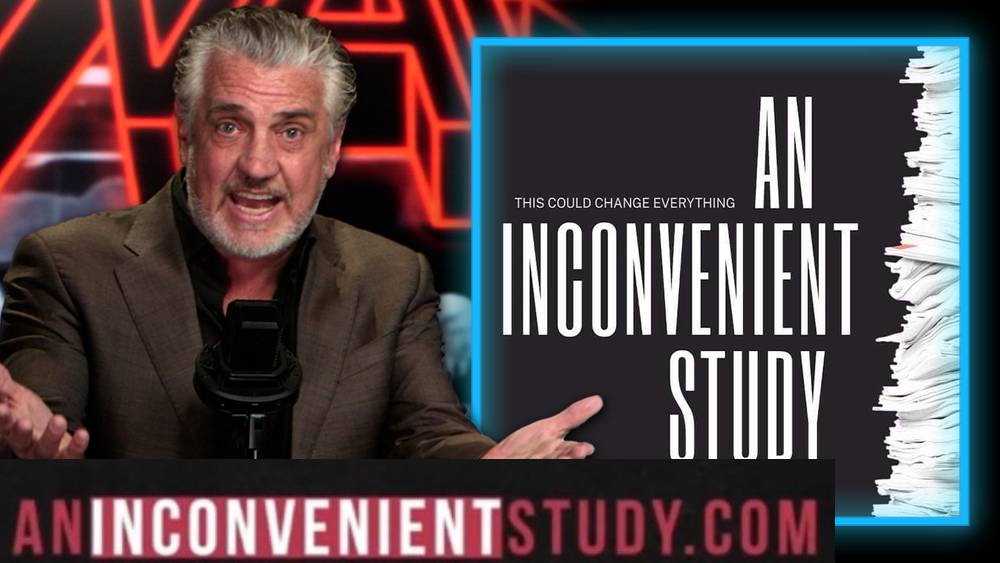
https://banned.video/watch?id=69051a0f394fe0e44ea924c6
https://www.AnInconvenientStudy.com/
WATCH FULL DOCUMENTARY & DOWNLOAD!
An Inconvenient Study! In 2016, journalist Del Bigtree issued a challenge to the head of infectious disease at one of the most prestigious medical institutions in the world! Conduct the most thorough vaxxed vs. unvaxxed study that has ever been done! The expert took up the challenge and ran the study to prove Del wrong! That study never saw the light of day…! Until now!
https://banned.video/watch?id=69050b7fc9e87194005de104
Impact of Childhood Vaccination on Short and Long-Term Chronic Health Outcomes in Children:
A Birth Cohort Study!
Lois Lamerato, PhD, Abigail Chatfield, MS, Amy Tang, PhD, Marcus Zervos, MD, Henry Ford Health System, Detroit MI
Department of Public Health Sciences
Division of Infectious Diseases
Wayne State University School of Medicine, Detroit MI
Running head: Association of childhood vaccination on chronic health in children
Word Count: 292 (Abstract), 4143 (Body)
https://www.hsgac.senate.gov/wp-content/uploads/Entered-into-hearing-record-Impact-of-Childhood-Vaccination-on-Short-and-Long-Term-Chronic-Health-Outcomes-in-Children-A-Birth-Cohort-Study.pdf
The Study
Here is what Henry Ford stated when The HighWire reached out to them for comment about the study:
“This report was not published because it did not meet the rigorous scientific standards we demand as a premier medical research institution. Data has consistently shown vaccinations are a safe and effective way to protect children against potentially life-altering diseases.”
And here is what Henry Ford has stated publicly about the study!

https://banned.video/watch?id=690159cb3e6e672c0cfb770a
VIDEO! While Investigating Havana Syndrome Reports, Controlled Testing In An EU Research Facility PROVES Victims Were Emitting A Frequency From Nanotech! Jesse Beltran Breaks Down His Latest Findings & Reveals How His Experiments Were Conducted!
https://banned.video/watch?id=6901578b7199834c22067f06
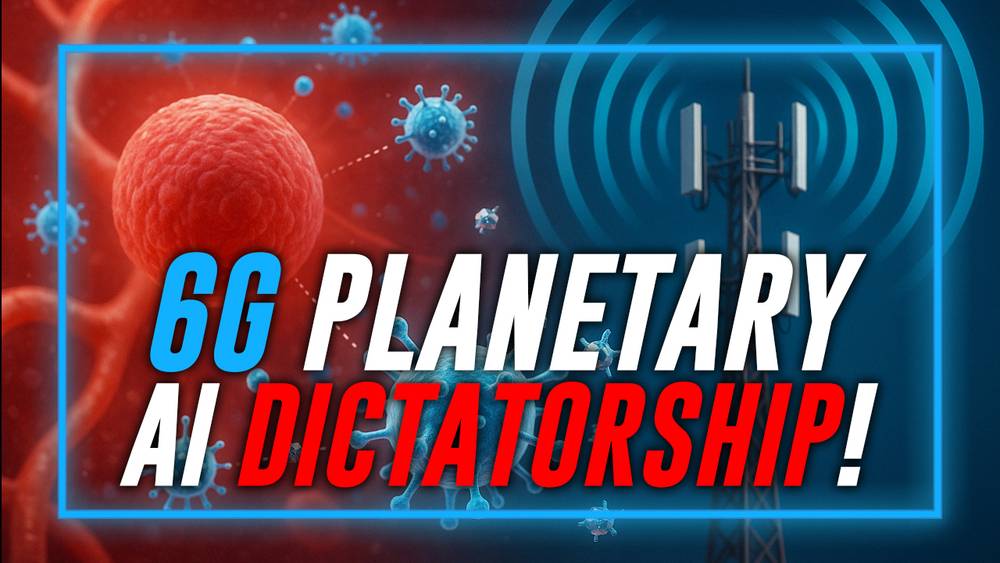
https://banned.video/watch?id=68fff2b1e7cfb2a21e646d31
https://ds2nano.com/ WWW.MINDLEXUSLIVE.COM https://www.cosmicclarityconnections.org/
DIED SUDDENLY 2!
https://ds2nano.com/
https://ds2nano.com/#page-2
https://ds2nano.com/#page-3
https://ds2nano.com/#page-4
WWW.MINDLEXUSLIVE.COM
https://www.cosmicclarityconnections.org/
EXCLUSIVE BOMBSHELL! Scientists Have Discovered That The Majority Of The Human Population Have Been Contaminated With Self-Replicating Nanotechnology To Be Integrated Into An AI System Of Cybernetic Total Control and Enslavement!
https://banned.video/watch?id=68fff2b1e7cfb2a21e646d31
BREAKING EXCLUSIVE! A First Look At The Upcoming Documentary Film “Nano Sapiens” Which Reveals The Covert Microchipping Of The World’s Population From The Director Of Died Suddenly, Jesse Beltran!
https://banned.video/watch?id=68e812083e6012fd53553611
Tell the White House and Congress to Support Descheduling and Conviction Relief! NORML is letting the White House and Congress know that it is time to bring the failed experiment of marijuana prohibition to a swift and conclusive end and undo the damage it has caused!
DOWNLOAD EXZACKLY WHAT YOU NEED! HUNDREDS OF PDFs & THOUSANDS OF PAGES UNCLASSIFIED! SEE & UNDERSTAND THE OFFICIAL DOCUMENTS THE EVIL GLOBALISTS ARE DOING AGAINST GOD’S CHOSEN ONES! WAKE UP & SHARE NOW!
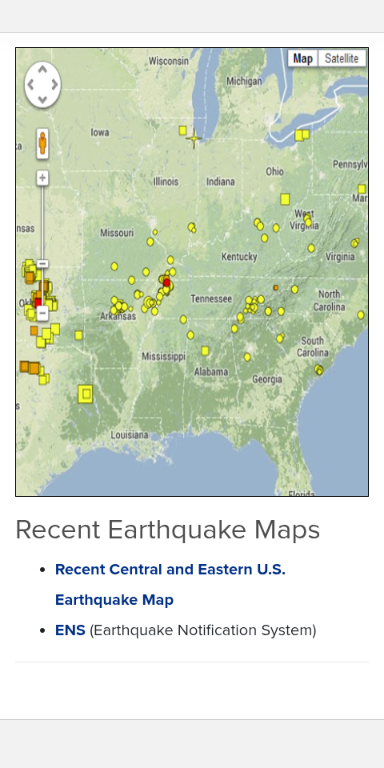
The Tennessee Hidden Earthquake Threat No One Talks About!
https://youtu.be/Xo6Hx-cxK5s?si=mHkzEsI5r_ZpRaG5
Seismic Information LIVE!
The Center For Earthquake Research and Information Based in Memphis!
https://www.memphis.edu/ceri/seismic/index.php
The Center for Earthquake Research and Information (CERI) partners with the Advanced National Seismic System (ANSS). As part of its monitoring activities, the ANSS includes a national Backbone network, the National Earthquake Information Center (NEIC) , the National Strong Motion Project , and 15 regional seismic networks operated by USGS and its partners. Visit their website for details on their activities!
Recent Earthquake Maps!
Recent Central and Eastern U.S. Earthquake Map
ENS (Earthquake Notification System)
Stations!
Station List (NM)
Station LIst (ET)
Station Map
Earthquake Catalogs
CERI Catalog
ANSS Catalog
SLU Moment Tensors
Temporary Deployments
NELE
WGDC
Other Information!
Recent Helicorder Displays
Meta DataNew Madrid
Eastern Tennessee
AG Network
Felt Reports
Shakemaps
Earthworm Seismic Processing Software Download
Earthworm Seismic Processing Software Documentation
Monitoring Partners:
ANSS
NEIC
SLU
SCSN
AGS
OGS
TexNet
GSN
UKY
Recent Earthquakes Map
New Madrid Earthquake Catalog
Seismic Stations
Helicorders
Felt Reports
ShakeMaps
Working Group on Data Conversion (WGDC)
Take Action!
Graduate Study at CERI
Seismic information
Earthquake Resources
Contact Us
The New Great American Awakening Is Here As Christian Revival Sweeps Across The US! Pastor Rodney Howard-Browne, The Man Who Pioneered Protesting Against COVID Lockdowns, Joins Alex Jones To Break The Latest On How To Save America’s Soul & The World! PLUS, Pastor Howard-Browne Answers The Age Old Question, What Is The Devil’s Greatest Trick Played On Humanity? Convincing The World He Didn’t Exist, Or Convincing The World God Didn’t Exist?
THE ANSWER TO ALEX JONES’S QUESTION TO Pastor Rodney Howard-Browne about what President Trump should do about releasing the Epstein Files, is that President Donald Trump HAS TO RELEASE THE EPSTEIN FILES and Every Nation and person needs to be punished for their actions! Then every Country and Nation on planet EARTH HAS TO CHANGE THIER GOVERNMENT TO THE SAME RULES THE U.S.A. HAS! THEY NEED TO HAVE THEIR OWN CONSTITUTION,
3 BRANCHES OF GOVERNMENT,
LEGISLATIVE,
CONGRESS,
SENATE,
HOUSE OF REPRESENTATIVES, FOR THIER NATION AND PEOPLE! EVERYBODY NEEDS THEIR BILL OF RIGHTS NOW ASAP! GOD BLESS EVERYBODY! CONTINUE TO #RAISETHEBAR2025!
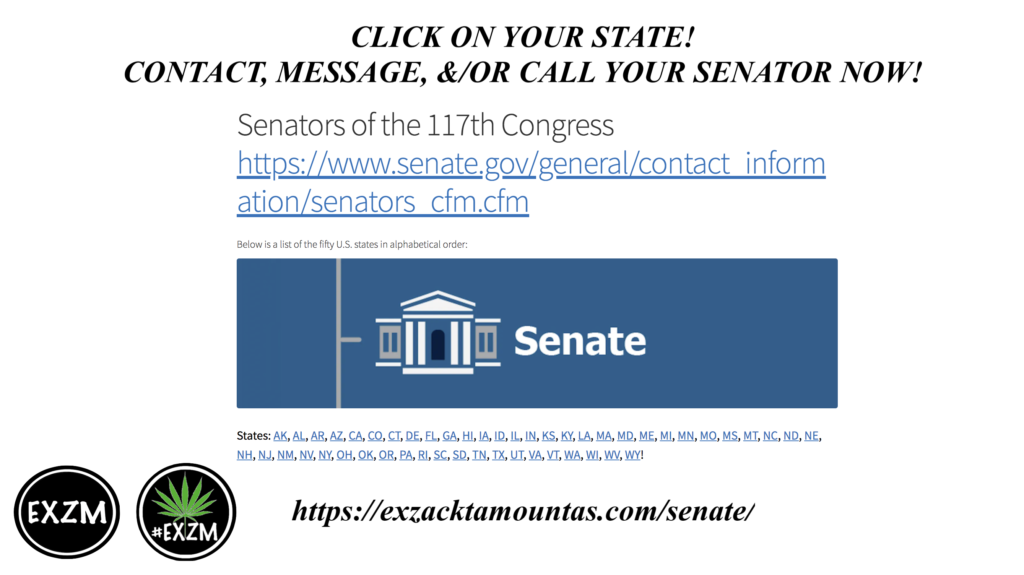
https://exzacktamountas.com/constitution/
3 BRANCHES OF GOVERNMENT
https://exzacktamountas.com/3-branches-of-government/
LEGISLATIVE
https://exzacktamountas.com/legislative/
CONGRESS
https://exzacktamountas.com/congress/
SENATE
https://exzacktamountas.com/senate/
HOUSE OF REPRESENTATIVES
https://exzacktamountas.com/house-of-representatives/
My exZACKtaMOUNTas website, includes information on the 3 Branches of the United States Government. The Legislative Branch, The Executive Branch, and The Judicial Branch. Everybody needs to first read the Constitution and then learn how the Federal Government runs, so that you know 1) The Legislative Branch, makes the laws. 2) Congress consists of the Senate and the House of Representatives. 3) The Executive Branch consists of the President, Vice President, Cabinet, and most federal agencies and carry out the laws. 4) The Judicial Branch consists of the Supreme Court and other federal courts and evaluates the laws.
It’s time to launch Operation Patriot Revere Worldwide! Patriots need to get together online, in the real world, and act worldwide, on what motivates them the most! We need to use the 1st amendment first, before we use the 2nd amendment! Whatever you do, get active or get enslaved! If the globalists, get control of the world, then Katie bar the door! We can’t let them do that, ever! Help me show these articles and videos by immediately being able to contact The Legislative Branch! Tell Congress, your Senators, and your House of Representatives, by going to these pages and tell them what you think. Share the articles and posts you want them to see on their social media platforms and more! Their social media links, ‘Contact’ links and office phone numbers are all on this website at: The Legislative Branch, Congress, Senate, House of Representatives. Don’t just sit there and take it! Let’s expose these bad guys and spread the #GOODNEWS! The spirit wants to fight! This is the time to start! Let’s get in that kick ass mode and share what we want to see!! Make the articles you like GO VIRAL! Wake up from the Great Illusion and see what is really happening! Expose the Truth to everybody you can and share with them exZACKly What They Need To Hear!
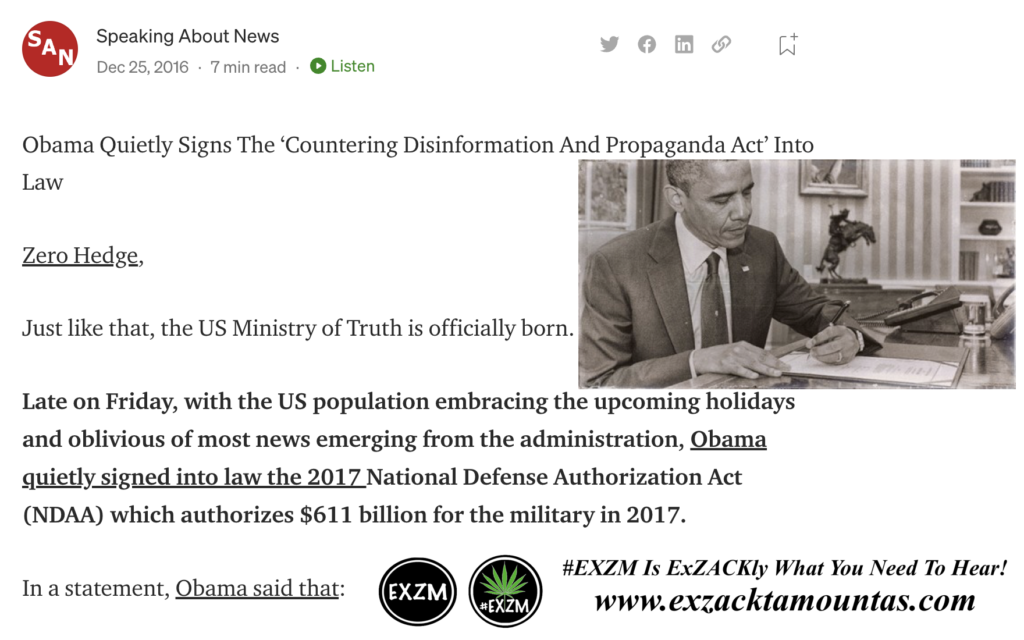
H.R.5736 – Smith-Mundt Modernization Act of 2012 – LEGALIZES PROPAGANDA!
https://www.congress.gov/bill/112th-congress/house-bill/5736
Obama Quietly Signs The ‘Countering Disinformation And Propaganda Act’ Into Law
https://speakingaboutnews.medium.com/obama-quietly-signs-the-countering-disinformation-and-propaganda-act-into-law-31be811b82a3
https://www.whitehouse.gov/briefing-room/signed-legislation
H.R.5181 – Countering Foreign Propaganda and Disinformation Act of 2016
https://www.congress.gov/bill/114th-congress/house-bill/5181/text
S.2943 – National Defense Authorization Act for Fiscal Year 2017
https://www.congress.gov/bill/114th-congress/senate-bill/2943
Charlie Kirk was murdered! Is an employee or a student of yours supporting political violence online? Submit them for review! Follow them on X/Twitter @forcharliekirk1! https://www.charliesmurderers.com/
Since Charlie Kirk was Murdered, unfortunately people are now beginning to feel how I felt when my best friend Josh McKenzie was also murdered Friday, July 2nd, 2010! He had recently passed away a few years before that, in an accident in 2008, but he said, God had brought him back to life, to live a few more years to create his music album, so it could be heard around the world, and to tell his story, and convince people GOD IS REAL! I couldn’t believe he was telling the truth from 2008 that he only had a short life ahead of him, so we BOTH LIVED LIFE TO THE FULLEST ENJOYING EVERY DAY AS IF IT WAS THE LAST! YOU CAN SEE THAT IN THE VIDEOS! He was an electrician but devoted most of his time to his true love, music. He was a songwriter and musician. Josh was an extraordinary guy with a free-spirit, laid back quality in his music and his personality. He breathed through his music and his music through him, letting his audience feel relaxed while they listened and received what the lyrics have to offer. He will be missed by all that knew him, but part of him will live on through his music! MAY IT TOUCH EVERYBODY’S LIVES AS HE DID WHEN HE WAS AMOUNG US, AND YES HE CONVINCED ME THAT GOD IS REAL!
Be Sure To Listen To & ENJOY Josh McKenzie’s FULL ALBUM Right Here, As Well As Videos From Yo Destiny!
Send my PATRIOTS DEFEAT GLOBALISTS full music album and ALL MY SONGS to President Trump and his staff, so they can use them while he’s in office the next 4 years, DESTROYING EVIL SATANISTS AND GLOBALISTS WORLDWIDE All Day, Every Day!!

I had to start a new Rumble video account because Youtube sucks now a days!
INFOWARS ANNOUNCES FREE SPEECH POSTER CHALLENGE WINNERS! Top Infowarriors revealed on NewsWars!
WATCH THE VIDEO! Zack Mount won 2nd place with his Stop The Censorship Music Video!
SHARE WITH OTHER PATRIOTS! HELP SHARE MY ALBUM WORLDWIDE SO WE CAN BRING DOWN THESE EVIL BAD GUYS!
Patriots Defeat Globalists by Zack Mount © Copyright – Zack Mount / Zack Mount (193428678088)
Genre: Hip-Hop/Rap: Political Rap – Release Date: 2019
Let’s Wake Up people’s Minds around the World about the Corrupt FakeStreamMedia, and the Evil DeepState Globalists trying to destroy America and President Donald J. Trump. I’m making positive, educational, political and motivational music to enjoy daily!
My Facebook & Twitter, pages were banned! https://www.facebook.com/DumpThemTrumpHaters &
https://twitter.com/exZACKtaMOUNTas
Parler has been shut down, @ZackMount! https://parler.com/profile/ZackMount/posts
So NOW share my WEBSITE’S DAILY posts!
Zack Mount
GET THE MUSIC!!
SPOTIFY! , ITUNES!, YOUTUBE!
INFOWARS ANNOUNCES FREE SPEECH POSTER CHALLENGE WINNERS! Top Infowarriors revealed on NewsWars!
WATCH THE VIDEO! Zack Mount won 2nd place with his Stop The Censorship Music Video!

WATCH THE VIDEO! Zack Mount won 2nd place with his Stop The Censorship Music Video!
Top 3 winners are in the Infowars Store Commercial below on July 8th 2019!
OVERVIEW SUMMARY OF ENTIRE PAGE BELOW!
I have TWO SOLUTIONS for Planet Mother Earth and ALL THE HUMAN BEINGS LIVING ON HER! The MOST IMPORTANT 1st SOLUTION is HEMP! GOD’s Natural Plant Saved The United States at the End of WW2 aka World War 2, and CAN and WILL Save the ENTIRE World and ALL Human Beings ONCE AGAIN in WW3 aka World War 3 Financially and Physically! That can be seen in the ‘HEMP FOR VICTORY’ Video Below! Hemp can literally do 50,000+ things and Replace Materials ESPECIALLY PLASTIC, COMBINE INTO MATERIALS such as STEEL, Cotton, Concrete, Fibers in Insulation in ALL Residential and ALL Industrial Buildings! COMBINING HEMP into tons of materials, MAKES ALL THE MATERIALS STRONGER, LONGER LASTING, BIODEGRADABLE, and a wide variety of other features. Plus Replacing Plastic with Hemp Material WILL Heal Mother Earth’s POLLUTED Oceans EASILY and Quickly, since they’ve been polluted the last 100 years with NASTY plastic! That’s only a few of the 50,000+ things Hemp can do physically! Financially HEMP will stop the WORLD ECONOMY from collapsing & THE EVIL GLOBALISTS COLLAPSING IT PURPOSEFULLY! Read all the details below and see the Factory that can be built worldwide, because HEMP CAN GROW 3 (Times Naturally) TO 4 TIMES (Grown in Greenhouses During the Winter Time) every year in Almost EVERY Environment WORLDWIDE! Reproducing Hemp 4 times a year is extremely profitable, making Quadrillions of dollars extremely easy to access, helping REGULAR FARMERS WORLDWIDE!
WATCH, READ, ENJOY, AND SHARE THESE DETAILS OF THE TOP NOTCH, GREAT, AMAZING AWESOME TWO SOLUTIONS WITH PRESIDENT TRUMP, SO WE CAN ALL BE EQUAL Human Beings with Holy Spirits, ON OUR MOTHER EARTH, LIVING IN THE GOLDEN ERA RIGHT NOW, ESPECIALLY BEFORE WHAT Ben Davidson’s SUSPICIOUS OBSERVERS is talking about is coming very soon to Mother Earth. Ben Davidson https://suspicious0bservers.org/ in the Suspicious OBSERVERS Videos describes how Forces in Outer Space FLIPS OUR PLANET OVER EVERY 12,000+ YEARS and is about to do that once again! BUT DO NOT BE SCARED OF ANYTHING, BESIDES GOD ALMIGHTY! NO FEAR! Be Safe Everyone! God Bless You! MUCH LOVE FROM Your BROTHER ZACK MOUNT! ENJOY MY MUSIC AND WEBSITE! PATRIOTS DEFEAT GLOBALISTS! IT’S EXZACKLY WHAT YOU NEED!
WAKE UP! GOD BLESS EVERYBODY!
https://alexjones.network/
https://x.com/elonmusk
https://x.com/ajnlive
https://x.com/RealAlexJones
What I am saying below about us all people becoming Quadrillionaires with Hemp, is so that we are easily ALL EQUAL, ALL Day every day and treat each other ALL EQUAL, ALL Day every day! Humankind must be equal to Mother Nature! As Above, So Below! We must all treat ourselves and are planet equally! If not, that’s why we’re living in Hell right now! By growing Hemp We give Planet Earth what she needs, and we also financially benefit from it, but this IS NOT about becoming rich and Evil. We Must Be Like a YING YANG, IN PERFECT HARMONY, 50/50, GOOD & EVIL BALANCED! MUST LOVE LIFE, & LOVE EVERY ONE AND EVERYTHING ON THIS PLANET! THAT IS HOW WE ALL BECOME FREE IN HARMONY WITH GOD!
We must do Daily Ancient Meditations Giving our Life, Christos Oil, Semen aka SPERM, COME, GOD’S LIFE, OUR LIFE, LIFE, from our Sacral Plexus, to our Brain, Multiplying them billions of times into our Mind, Body, and Spirit, in sync with the Moon Cycles! That’s how you heal yourself and this planet and we ALL Rise To THE GOLDEN AGE!
Christos Oil aka Jesus Christ, Flows Greatly In Everybody’s Mind, Body, Spirit! Let’s Be A Balanced Ying Yang! To understand ALL Of This,
PLEASE, START LEARNING & WATCHING Kelly Marie-Kerr’s videos https://youtube.com/@kellymariekerr?si=C722Tf38Y0732DYq and many others, ABOUT Ancient Sacred Secretion MEDITATING, which is Officially SPIRITUAL AWAKENING, & ACCESSING SPIRITUAL CONSCIOUSNESS, through DAILY MEDITATIONS, getting THE WORD OF GOD aka CHRISTOS OIL aka Jesus Christ, OFFICIALLY Flowing GREATLY and CORRECTLY, in your MIND, BODY, & SPIRIT, Healing, Helping, Leading and Guiding YOU, Mentally, Physically, & Spiritually! You can easily do this easy 30 MINUTE meditation multiple TIMES EVERY DAY and manifest reality as long as it is ALWAYS Good and Positive! This IS NOT meant for ANY negativity what so ever, because God will do Karma to those who use this negatively!
DOWNLOAD THESE BEFORE THE INTERNET IS SHUT DOWN! Start at the bottom of this list!
If you want Immortality, and want to easily communicate with GOD, and his Son Jesus Christ, and the Christos Oil Flowing easily in your body that every person can easily access within themselves by praying, START LEARNING & WATCHING Kelly Marie-Kerr’s videos, and many others, ABOUT Ancient Sacred Secretion MEDITATING, which is Officially SPIRITUAL AWAKENING, & ACCESSING SPIRITUAL CONSCIOUSNESS, through DAILY MEDITATIONS, getting THE WORD OF GOD aka CHRISTOS OIL aka Jesus Christ, OFFICIALLY Flowing GREATLY and CORRECTLY, in your MIND, BODY, & SPIRIT, Healing, Helping, Leading and Guiding YOU, Mentally, Physically, & Spiritually!
https://exzacktamountas.com/watch-kelly-marie-kerr/
https://youtube.com/shorts/HmCMRD5Wfgo?si=8IFcUfpAe0p82_GL
KATHARA GRID! It Unlocks Time travel, true healing, and your Eternal Self!
https://youtube.com/shorts/9cvNPPcVkV4?si=9bKdx3GQnx3EF8Yy
How Jehovah and the Anunnaki Hijacked Earth’s Ascension Grids!
https://youtube.com/shorts/abstqqdejUg?si=_0jxc7OEycdyRepu
Kundalini Awakening Part 2! The Sacred Reconstruction Has Begun!
https://youtu.be/e2EySw0C31A?si=DuF0Gacsb30eGiZd
Kundalini! The Cosmic Fire Awakening Your Ascension Technology!
https://youtube.com/shorts/HmCMRD5Wfgo?si=8IFcUfpAe0p82_GL
Learn More With Kelly-Marie Kerr!
https://youtube.com/@kellymariekerr?si=GLQm8gVgkY8SeBU5
START LEARNING & WATCHING Kelly Marie-Kerr’s videos, and many others, ABOUT Ancient Sacred Secretion MEDITATING, which is Officially SPIRITUAL AWAKENING, & ACCESSING SPIRITUAL CONSCIOUSNESS, through DAILY MEDITATIONS, getting THE WORD OF GOD aka CHRISTOS OIL aka Jesus Christ, OFFICIALLY Flowing GREATLY and CORRECTLY, in your MIND, BODY, & SPIRIT, Healing, Helping, Leading and Guiding YOU, Mentally, Physically, & Spiritually!
https://exzacktamountas.com/watch-kelly-marie-kerr/
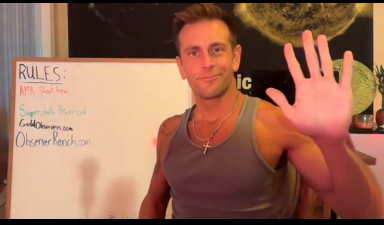
https://exzacktamountas.com/ben-davidson-of-suspicious-observers-went-live-this-year-2025-answering-tons-of-questions-that-were-asked-be-on-the-lookout-for-more-live-videos-coming-soon-where-you-can-ask-questions-change-of-th/
THESE MAY BE OUR MEDICAL PODS! MILLIONS OF THEM IN THE 5TH DIMENSION! IMAGINE THEM SO THEY COME INTO OUR 3RD DIMENSION! BE CAREFUL TOO! THIS IS REAL!
All audio and Music rights Reserved to All Original owners!
UFOs HERE October 17th 2010!
WORLD EXCLUSIVE! Lockheed Takeover UFO Grid Plan Revealed! Dark Journalist Daniel Liszt Reveals Latest On The UFO File, Continuity Of Government (COG) Network, Lockheed Martin Space Takeover UFO Grid & MORE!
PLEASE TELL PRESIDENT DONALD TRUMP, to start Growing God’s Greatest Plant HEMP in between CORN and SOYBEAN Season So Everybody on Planet Earth Can Be QUADRILLIONAIRES! Not Millionaires, Billionaires, or Trillionaires! BUT GOING TO THE NEXT LEVEL and BEING QUADRILLIONAIRES and SAVING Mother Earth Planet EARTH, Easily and Quickly By Funding Hempitecture, and Following their Layout On HOW TO Build Factory AND Manufacturing Hemp!
USE GOD’S PLANT HEMP TO REPLACE Middle East OIL and 50,000+ Other Things! TRUMP VANCE THIS ECONOMY with this QUADRILLION DOLLAR Plant ASAP!
LET’S DEFEAT EVIL SATANIC MONOPOLIZED CORPORATIONS BY REPLACING THEM WITH POSITIVE PATRIOTIC HEMP CORPORATIONS!
Outline of the Benefits and Uses of Hemp:
Biomass Hemp
As a biomass, hemp burns hotter and cleaner than coal.
Hemp biomass can be converted to methane or methanol.
Hemp Paper
Industrial hemp makes better paper than wood (the US Constitution was printed on hemp).
Hemp Oils
Hemp produces oils which can replace synthetic solvents for a wide range of uses, including paints and paint thinners.
Clothing from hemp
Hemp fibers can be woven into extremely durable clothing material.
Grows Easily!
Hemp can be grown organically in poor soil almost anywhere, up to three crops per year, far more efficient than lumber.
Hemp is naturally drought, pest, and disease resistant, eliminating the need for synthetic chemicals and reducing the demand on dwindling water supplies.

https://youtu.be/mEliObfEcaM?si=Ze4xezvdOaCA9F0u
“Whether it’s Canada, India, or South Africa, hemp is building bridges for a more sustainable and inclusive future!”
“From environmental restoration to economic empowerment, hemp is more than a plant — it’s a pathway toward sustainable development! Learn more! Support sustainable practices! Join the movement!”
Biodiesel and Renewable Energy from Hemp!
https://youtu.be/BboDby_jcfs?si=R6CwbdFPtuYSGuaS
“First, let’s understand what biodiesel is. Biodiesel is a clean-burning alternative to petroleum-based diesel. Made from renewable resources, it’s used to power vehicles, machinery, and generators without the harmful emissions of traditional diesel.”Hemp seeds contain oil, which can be extracted and processed into biodiesel. This process, known as transesterification, involves converting the oil into biodiesel through a chemical reaction with methanol and a catalyst.””Hemp as a source of biodiesel offers numerous advantages. First, it’s a highly renewable crop that grows quickly, needing minimal pesticides and fertilizers. It also absorbs CO2 as it grows, helping offset the carbon emissions it produces during fuel combustion.””Countries around the world are already exploring the use of hemp biodiesel. Hemp is especially well-suited for biodiesel production in regions where it’s easy to grow. Not only does it offer an eco-friendly solution, but it also has the potential to provide new economic opportunities for farmers.””While hemp biodiesel is still emerging, its future looks promising. With growing interest in sustainable energy solutions, hemp could become a significant player in the renewable energy market, helping us transition to a cleaner, greener future.”
Redefining whats possible with sustainable materials!
https://youtu.be/PTpcU9KLsak?si=JdtMGV17lfEfvxrY
14 months in the making. Over $1.5M raised from 1000+ investors. We’re not just manufacturing carbon-negative solutions, we’re building a future-ready platform by layering tech into our innovation stack, unlocking unprecedented scale. And this is just the beginning…https://wefunder.com/Hempitecture
Join the Greener Guild!
https://youtube.com/shorts/y2YuGNPcUXg?si=tt6rTOobCTM6Rwge
Hempitecture’s exclusive ambassador program. For climate smart builders – earn commissions, discounts, samples, branded swag marketing resources and early access.
https://www.hempitecture.com/
Getting ready for big things!
https://youtube.com/shorts/1_qQmbUlQRE?si=_hUm-XMhtKWBOWu8
Finally a healthy alternative to conventional toxic insulation!
https://youtube.com/shorts/sL4vzaX21a0?si=0TdL3V04Lh2c1b4G
High-performance, low-carbon insulation made from plant fiber! Net ZERO clean manufacturing! Award-winning whole home thermal and acoustic insulation!
BREAKING BOMBSHELL! Gavin Newsom Announces Plan To Enact Permanent Emergency Rule Over Los Angeles & Establish “LA 2.0”!
DOWNLOAD PDF SmartLA 2028! ASAP!
IT’S TOO BAD, L.A., California, and The Rest of the World doesn’t have their HOUSES AND BUILDINGS, Built out of % FIREPROOF HEMPCRETE aka HEMP CONCRETE That is EASY TO CREATE and has been used for 12,000+ years, except the last almost 100 years because EVIL PEOPLE, DONT WANT TO SHARE PLANET EARTH! Please WATCH & SHARE VIDEO! Let’s Save Planet Earth with God’s plant HEMP!

https://youtu.be/3yS4JjTUMiU?si=WGPZUnZkruHEQMz4
https://buy.hempitecture.com/
Hempitecture has made it easier and faster than ever to shop for insulation online with our new Instant Quote Generator. Quickly purchase products and have them shipped directly to your job site!
THE HEMP HOUSE by The Low Carbon Project!
https://youtube.com/playlist?list=PLHXzbBoK4qzzApDO94o7nLrTQeseo6VAL&si=tPI91GaUl4uKFJpm
WATCH FULL PLAYLIST!
0 – Welcome to our channel!
https://youtu.be/I_U0vJnuXw0?si=oHY85KnPL7A-hLSl
1 – Preparing the land for the hemp house!
https://youtu.be/yoSCCM2vnbk?si=WOIfzHP7ppcR6qRO
2 – A 50% reduction in cement! Pouring the foundations for the Hemp house!
https://youtu.be/byId8IwwtZU?si=jTfKePobnQDHxx4o
3 – Hempcrete needs a timer frame! This is how we did it!
https://youtu.be/Fe05jxIMfKs?si=QELwFNUJhdr_3j18
4 – Installing wood-wool boards for breathable walls!
https://youtu.be/6Fk4SH2VcDU?si=6cayDd35Afu0dXek
5 – Hemp house Q&A with Matt!
https://youtu.be/ZOIIkt65Rjk?si=R5qUnjNv0oY8qDfs
6 – Building an eco house from Hemp!
https://youtu.be/NicHGf1jByc?si=XgdepmdFeyjtJbpg
7 – Raising the roof! A self build Hemp house in the UK!
https://youtu.be/x0Wj_EjH2_s?si=bwKJuz_ijq29YXIc
8 – Lime rendering Hempcrete walls!
https://youtu.be/3oqEzAi4tFE?si=bc152rhXX3fM42iB
9 – How to paint a house made of Hemp!
https://youtu.be/Hd29kodafvA?si=F0WuRkOmQhLcJlO0
10 – The Hemp house AMA number 3! Your questions answered!
https://youtu.be/6PGI9FDQ_hE?si=nG-CTIY7kNTa6nCa
TIMELAPSE! 2 guys build a Hempcrete house in UK! Start to finish!
https://youtu.be/0bBQKmYhgmY?si=VVs_d3bIF0zwSTty
11- How we built a supporting wall using Hempcrete!
https://youtu.be/i2E6MffXC7Q?si=KB-JnRmXsMqpYw8M
12 – Self build Eco house! A walkabout tour of progress!
https://youtu.be/_8NNZn40cro?si=9uIzitlGyW6ytK6H
13 – DIY install of a Vaillant heat pump in a self build Hempcrete house!
https://youtu.be/ZF-1mnaK3uc?si=583Oz4X1LfK2M13b
14 – Hemp house garden renovation! Planting hedges, building a shed, and a no dig bed!
https://youtu.be/grT3nNHT3_g?si=bW9T8zoBziBV5ocm
DIY Hempcrete Wall System Tutorial! Fire – Insect – Mold Proof Material at a Low Cost!
https://youtu.be/w9tgILK8TH0?si=XttAYEgbL1Sbwc4P
Hempcrete is blowing my mind and after watching this video you will understand why!
Learn More:
Crestone Energy Fair: https://www.crestoneenergyfair.org/
Rocky Mountain Hemp Build Website: https://www.rockymountainhemp.farm/
Step-by-step guide how to build a HEMPCRETE HOUSE! Sergiy Kovalenkov! CEO of Hempire!
https://youtu.be/b51l47Awv8w?si=9pk_mkgaOoO1o5A5
Hempitecture Crowdfunding Investment Scenario!
https://youtu.be/lW1wTtuJ-pA?si=vuSzui3tT49csSDx
Building with Hemp! An Incredible Natural Insulation & Sustainable Material!
https://youtu.be/9d_wsoZS6j0?si=3FbDNK78EwUuakDt
Amazing Lego-Style HEMP BLOCKS Make Building a House Quick, Easy & Sustainable!
https://youtu.be/eqLXXjvQXgI?si=epVXnOmWI1Z9Nrkt
This video explores a new building block made from hemp and lime, offering a sustainable and efficient alternative to traditional construction materials. The blocks are easy to handle, interlock for stability, and provide excellent insulation and fire resistance. The video highlights the benefits of hemp as a building material and showcases the innovative design of these “Lego-like” blocks!
THIS HOUSE IS BUILT USING HEMP!! HEMP CAN BE GROWN WORLDWIDE! LET’S START GROWING GOD’S PLANT AGAIN! IN THE 1930’S EVIL GLOBALISTS BANNED IT FROM BEING GROWN! IT’S BEEN ALMOST 100 YEARS! LET’S HELP MOTHER EARTH AND EVERY PERSON ON PLANET EARTH! PRESIDENT TRUMP CONTINUE TO #RAISETHEBAR2025 AND LET’S GROW HEMP WORLDWIDE ASAP!
Hemp Concrete Walls (R30 + Fireproof) – You Won’t Believe How They Built This House!
https://youtu.be/cm23l_VLyp4?si=HrvXIbZC5bIqKlBi Check this out, Hemp construction! Hemp has been used in various forms of construction dating back to the Romans, in bridges, sails, ropes, and now more recently in residential construction. Reintroduced first in Europe, Hemp construction takes form as a low weight, high insulating, vapor permeable wall component. Placed usually in one of three ways: cast in place, sprayed, or by block. Hempcrete utilizes the core of hemp plants in a woodchip like form as the aggregate, combined with natural binders, and water to achieve the finished product. We were fortunate to visit a site in central Texas where they are using a hempcrete in the wall assembly, to surround a roughly 400 year old Japanese timber frame structure. Huge thanks to Mattie Mead, who founded Hempitecture, an Idaho based company bringing hempcrete and hemp wool insulation to the American market, for taking time to show us this project. Hemp has gotten a bad wrap over the last century thanks to its medicinal cousin. But from the sound of it, we should be seeing more and more applications of hemp here in the states, as it is a bomber agricultural commodity with so many applications. Project – Central Texas https://www.hempitecture.com/ Mattie Mead – Hempitecture https://www.hempitecture.com/ Chad Burnel – EIM inc. – Builder https://eimtxcorp.com/ Axel Vervoodt – Architect https://www.axel-vervoordt.com/interior-and-design Mell Lawrence – Local Architect http://www.melllawrencearchitects.com/ Seth Willison – Timber Frame Designer https://www.willisontimberworks.com/ Follow Matt on Instagram! https://www.instagram.com/risingerbuild/ or Twitter https://x.com/mattrisinger?mx=2 For more great video content check out Matts new site! https://buildshownetwork.com/ Sign-Up for the Newsletter https://buildshownetwork.com/newsletter Build Show Network on Instagram https://www.instagram.com/thebuildshow/ Huge thanks to our Show sponsors Polywall, Huber, Dorken Delta, Prosoco, & Viewrail for helping to make these videos possible! These are all trusted companies that Matt has worked with for years and trusts their products in the homes he builds. We would highly encourage you to check out their websites for more info. http://www.Poly-Wall.com http://www.Dorken.com http://www.Huberwood.com http://www.Prosoco.com https://www.Viewrail.com
January 17th 2025 – LEED v5 Embodied Carbon Credits – A Simplified Understanding! https://www.hempitecture.com/post/easy-to-navigate-leed-v5-embodied-carbon-credits/
Invest in Hempitecture Inc.High Performance, Carbon Negative Insulation! https://wefunder.com/hempitecture?_kx=KXYsUjParavwiWQyjMx9uPbVDC7AFkn1-94LoeywOfklTQP-FzDuxpRgYEVq810C.Xyaccs
The DOE, Department Of Energy Of The United States, invested $8 MILLION into HEMPITECTURE in 2024 FOR THE FIRST TIME, because they KNOW, God’s Plant HEMP Can and Will Save Everybody! Get Started NOW! SHARE THIS STORY AND VIDEOS WITH PRESIDENT DONALD TRUMP ESPECIALLY SO THE UNITED STATES CAN EASILY AVOID AN ECONOMIC COLLAPSE! Plus Growing Hemp has 50,000+ Benefits, including putting Vitamins A to Z in the dirt helping Mother Earth Heal and be Healthy! I would love to be a part of the 2nd Trump administration in the Hemp Department! Hempitecture is the Base Unit Number 1, that we need to multiply into almost every City, in Every State, In the United States, and in Every Country to Advance aka TrumpVance Everybody into the 21st Century!
Hempitecture Manufacturing Video!
https://youtu.be/r8cyQwCMKts?si=EKCb9Ok9pSIYHlwg
Hempitecture Manufacturing Team Spotlight!
Flash and Batt Insulation with HempWool! https://youtu.be/YPREAb_vQvE?si=CMeYxR0pDVAMP0GM
Hemp Insulation and Spray foam? Yes! Hempitecture CEO Mattie Mead discusses how HempWool Hemp Insulation can be used to mitigate the climate impacts of spray foam, while maintaining a high performing, energy efficient assembly!
Hempitecture in 2024 and Beyond!
https://youtu.be/u5F3vJYSPcY?si=JVFRiM-a2leLMkTF
The story of where Hempitecture came from and where we are going in 3 minutes and 30 seconds. Visual imagery by Idarado, Corey Warren, and Brian Anderson. Complimentary footage from Patagonia. Storyline by HempitectureTo invest in Hempitecture: www.wefunder.com/hempitecture

https://banned.video/watch?id=61e30b09e9a7ce775c74edc5
January 15th 2022 – US Corporations do not need to tell you what nanotechnologies they are putting in your food!
America’s Food Supply Fertilized With Human Remains And Coated With Nanoparticles! Soylent Green Is People!
https://exzacktamountas.com/americas-food-supply-fertilized-with-human-remains-and-coated-with-nanoparticles-soylent-green-is-people/
BE SURE TO WATCH AND SHARE THESE 1,600+ VIDEOS From 16 Pages that have 100 videos on each of them! –>
COMBINATION OF ALL THE PAGES named MOST WATCHED VIDEOS ON BANNED.VIDEO! DEEP STATE GLOBALISTS DEPOPULATION, ELECTION FRAUD, & MUCH MORE! PAGES 1 to 16 have 1,600 Videos from February 11th 2021 to December 19th 2022! Plus, President Election Footage from November, December 2020! Multiple Alex Jones’s Infowars Full Movies, & MUCH MORE!
PAGE 1, 2, 3, 4, 5, 6, 7, 8, 9, 10, 11, 12, 13, 14, 15, 16, PLUS MUCH MORE COMING SOON!

https://exzacktamountas.com/latest-posts/
